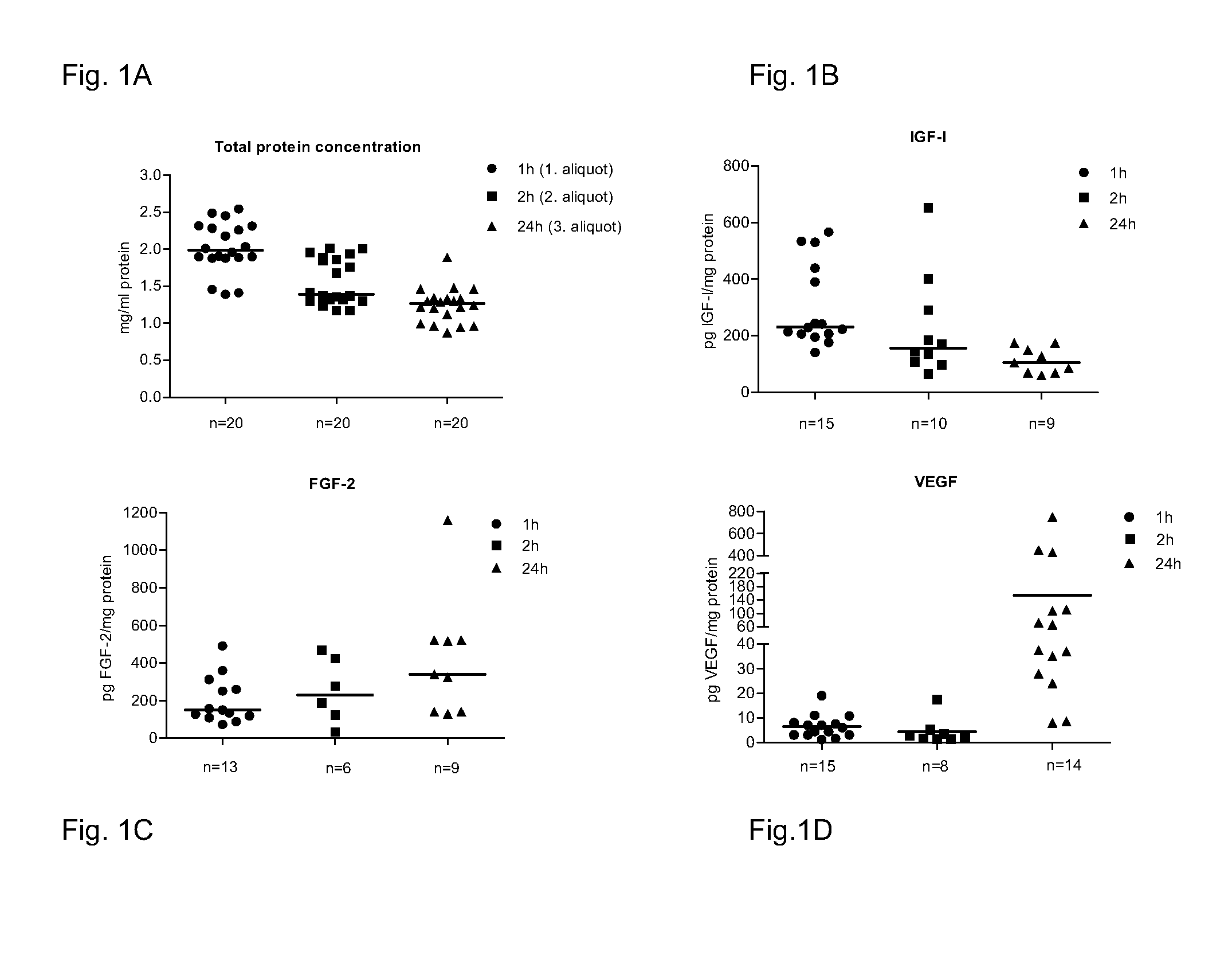Methods and means for soft tissue engineering
a soft tissue engineering and soft tissue technology, applied in the field of soft tissue engineering, can solve the problems of excessive connective tissue (scar) formation, severe rejection reactions, inflammation reactions,
- Summary
- Abstract
- Description
- Claims
- Application Information
AI Technical Summary
Benefits of technology
Problems solved by technology
Method used
Image
Examples
example 1
Preparation of Adipose Tissue Extracts for Cell Culture and Animal Studies
[0066]Human adipose tissue specimens obtained from liposuctions and as a subcutaneous tissue from surgical operations, as well as rat adipose tissue specimens obtained from sacrificed rats were minced into small pieces, if necessary. Tissue pieces or liposuction material was transferred into 50 ml tubes (Nunc). Sterile salt solution (for animal studies) or DMEM / F12 medium (for cell culture studies) without any supplements was added to the tubes and incubated for at least 45 minutes. The tubes were shaken gently a few times during the incubation. Samples of the adipose tissue extract (ATE) were collected at various time points (at each collection point, the medium or salt solution was completely removed and replaced with a fresh liquid), centrifuged at 12 000 rpm for 5 minutes and sterile filtered prior to use in cell culture or animal experiments. Viability of the cells was tested by isolating the cells and f...
example 2
Adipogenic Potential of Adipose Tissue Extracts
[0074]Human adipose derived stem cells (hASC) were isolated according to a protocol modified from Zuk P A et al. (Mol Biol Cell. 2002 Dec;13(12):4279-95.). Briefly, human adipose tissue specimens obtained from surgical operations or liposuctions were cut into small pieces if necessary and digested enzymatically in DMEM / F12 medium supplemented with 0.05% collagenase I for 60 to 90 minutes at 37° C. in a shaker. To ease the digestion, the tissue was occasionally aspirated during the incubation period. In order to separate a stromal vascular fraction and a stem cell population, the digested tissue was centrifuged at 600×g for 10 minutes at room temperature. The digested tissue was first filtered through a filter having a pore size of 100 μm and then through a filter having a pore size of 40 μm. The human stem cell population obtained was cultured in DMEM / F12 supplemented with 15% human serum (HS, Cambrex), 1 mM L-glutamine, and 1% antibiot...
example 3
Angiogenic Potential of Adipose Tissue Extracts
[0085]BJ fibroblasts (CRL-2522; American Type Culture Collection, Manassas, Va., USA,) were cultured in MEM (Gibco) supplemented with 10% fetal bovine serum, 1% L-glutamine, 1% non-essential amino acids (Gibco), and 1% antibiotic-antimycotic mixture (Gibco). The cells were maintained at 37° C. under a 5% CO2 air atmosphere at a constant humidity. The medium was changed every two to three days and confluent cells were split 1:4.
[0086]Human umbilical vein endothelial cells (HUVEC) were isolated from an umbilical cord specimen and cultured in Endothelial Growth Medium (EGM-2, Lonza) up to passage 7. The cells were maintained at 37° C. under a 5% CO2 air atmosphere at a constant humidity. The medium was changed every two to three days and confluent cells were split 1:4.
[0087]To study the angiogenic potential of the adipose tissue extract according to the present disclosure, BJ fibroblasts were plated at a density of 20000 cells / cm2 into 48-...
PUM
| Property | Measurement | Unit |
|---|---|---|
| Mass | aaaaa | aaaaa |
| Mass | aaaaa | aaaaa |
| Mass | aaaaa | aaaaa |
Abstract
Description
Claims
Application Information
 Login to View More
Login to View More - R&D
- Intellectual Property
- Life Sciences
- Materials
- Tech Scout
- Unparalleled Data Quality
- Higher Quality Content
- 60% Fewer Hallucinations
Browse by: Latest US Patents, China's latest patents, Technical Efficacy Thesaurus, Application Domain, Technology Topic, Popular Technical Reports.
© 2025 PatSnap. All rights reserved.Legal|Privacy policy|Modern Slavery Act Transparency Statement|Sitemap|About US| Contact US: help@patsnap.com



